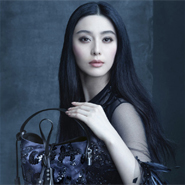- About
- Subscribe Now
- New York,
March 28, 2014

Chinese consumers look to a brand’s craftsmanship more than other factors when determining its luxury status, according to a new study by Mintel.
For Chinese consumers dwelling in cities, craftsmanship comes before the words “expensive” or “status,” the respondent’s second and third most popular choices. This shows a shift in attitude among Chinese consumers, who are now buying luxury items more for their own pleasure and less as a status symbol.
"The most important finding of the study was that the research response showed a distinct shift in perception of luxury to the Chinese consumer," said Matthew Crabbe, director of research Asia Pacific at Mintel, Kuala Lumpur, Malaysia.
"In the first instance, when we asked which words best defined luxury, in the abstract, people chose words that related to status and showing wealth, but when we asked what luxury meant to them personally, is was much more about quality, personal fulfillment and craftsmanship than status," he said. "This showed us that consumers are developing a more sophisticated and nuanced attitude to luxury.
"Therefore, the assumed stereotype of Chinese luxury consumers being fixated on showing off has changed."
Quality over extravagance
The wealthier a respondent was, the more likely they were to associate craftsmanship with luxury. Seventy-one percent of those surveyed from households earning more than approximately $4,000 per month equate luxury with craftsmanship, compared to 61 percent of those making between $3,200 and $4,000.
Higher-earning respondents were also less likely to look to luxury items for status, with 53 percent of consumers with a monthly household income of $3,200 to $4,000 saying they consider status when making a luxury purchase, and only 48 percent of consumers making more than $4,000 saying the same.
Fendi's Un Art Autre exhibit, which stopped in Beijing, focused on the brand's craftmanship with fur
Forty-six percent of consumers in households earning more than $3,200 a month consider extravagance to be central to the definition of a luxury item. This becomes more common in lower income brackets, with 51 percent of those making approximately $3,000 to $3,060 and 53 percent of households earning between $1,930 and $3,000 equating status with luxury.
This paves the way for luxury brands that are not as well established among Chinese consumers, since they are showing more of a willingness to try new labels.
Valentino flagship in Shanghai
Apparel is one industry where Chinese consumers are changing their attitude. Forty-three percent say that Chinese luxury clothing companies are equal to foreign labels, and 15 percent say that Chinese brands are superior.
Footwear is another category with a changing image in China. Forty percent of consumers believe domestic luxury footwear is as good as products made outside the country, with 16 percent believing Chinese brands to be better.
Since Chinese luxury apparel and accessories brands have the ability to better tailor their merchandise to the Chinese market, they may hold a large place in the Chinese luxury clothing and shoe markets in the upcoming years.
In cosmetics and watches, consumers still look to foreign brands, with 69 percent of respondents saying they consider foreign cosmetics superior, and 79 percent saying foreign watches are better.
Brand introduction
Four out of five Shanghai residents have purchased at least one luxury item within the past 12 months, and most say they will be ready to purchase another luxury item within the next six months, according to a report by ContactLab.
The study, which surveyed residents of both New York and Shanghai, found that residents of the Chinese city surveyed are also planning to outspend their New York counterparts for similar items by 66 percent when they buy their next luxury item. Seventy-seven percent of the New Yorkers surveyed say they plan to purchase in the next six months, compared to 91 percent of Shanghai respondents (see story).
Because of this changing attitude toward luxury goods, brands that may not have had a large awareness in China are finding ways to court consumers.
Spanish leather goods maker Loewe has unveiled a touring exhibit that will stop solely in cities within China and Spain.
Loewe’s “Fragments of a Story” exhibit, which focuses on the turning points in the brand’s history, opened in Hong Kong first on Feb. 27. The brand’s choices of destinations point to a strong following in China, as well as the ever-growing importance of the Chinese consumer for luxury brands (see story).
This change in Chinese consumers' attitudes about luxury calls for a revised marketing plan to appeal to their interests.
"Marketers need to shift their emphasis," Mr. Crabbe said. "They are no longer selling high profile brands with in-your-face logos to social climbers, they now need to respond to more nuanced and sophisticated consumers who are trying to express their individuality through what they buy.
"Subtlety and nuance are now much more important," he said. "Chinese luxury consumes are growing up, and marketers need to reflect that in how they communicate with consumers.
"Also, we found that consumers are responding more to home-grown luxury brands and craftsmanship, and this means being foreign is no longer the prime driver. More important is the message about brand history, quality, provenance and value.
"It means that the luxury market in China has stepped up a significant rung on the ladder, and that luxury in China is not about reflecting foreign values alone, but the mix of foreign and Chinese perceptions of quality, sophistication, cosmopolitanism and culture."
Final Take
Sarah Jones, editorial assistant on Luxury Daily, New York
Share your thoughts. Click here